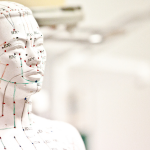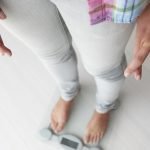Children & Sleep: How Bedtime Routines Can Influence Obesity
Alexsia Priolo, ND
Tolle Causam
In Canada, 1 out of 7 children and adolescents is obese. This puts children at increased risk for many chronic conditions, including cardiovascular disease, type 2 diabetes, and hypertension. Obesity costs Canadians approximately $7 billion, a figure that is estimated to rise to $8.8 billion by 2021.1 Childhood obesity is a significant public health issue, with many factors contributing to its development, including maternal health in preconception and prenatal periods, food consumption, physical inactivity, and inadequate sleep. This article will be discussing factors affecting sleep and how these factors affect obesity in adolescents and teens.
There are 2 particularly important aspects of sleep – duration and timing (onset of sleep).2 As children get older and begin to attend school, sleep onset is delayed, especially as they approach adolescence. According to a 2004 survey by the National Sleep Foundation, 32% of preschoolers and 27% of school-aged children slept fewer hours than parents/caregivers thought was required.3 It is recommended that children in elementary school should aim for 10-12 hours, while high school students should aim for 9 hours. Nevertheless, waking up feeling well rested can infer that a child has obtained the right amount of sleep.
Sleep & Obesity
A 2017 longitudinal study sampling 10 995 children in the United Kingdom assessed the relationship between emotional and cognitive self-regulation related to household routines, and how they both predict obesity.4 Primary caregivers began to report routines starting at 3 years of age. They were asked if their child goes to bed at regular times, eats meals at regular times, and how many hours per day the child watches television. For an assessment of self-regulation, parents also completed items from the Child Social Behavior Questionnaire.
Self-regulation was split into 2 factors – emotional regulation and cognitive regulation. Emotional regulation refers to a person’s ability to manage and respond to an emotional experience,5 whereas cognitive regulation includes the development of constructive behaviors affecting a person’s use of cognitive abilities to integrate learning processes.6 This form of self-regulation includes personal initiative, perseverance, and adaptive skill.
It was found that by age 3, 41.4% of children always had a regular bedtime, 46.6% had regular mealtimes, and 23.1% had daily television viewing of 1 hour or less.4 By age 11, 6.2% of children were obese (as measured by height and weight, with a BMI at or above 30). Having an inconsistent bedtime was the strongest predictor of obesity. Not having a regular bedtime and having poor emotional self-regulation were independent predictors of obesity by 11 years old. Interestingly, children with inconsistent mealtimes at 3 years old were less likely to be obese at 11. Furthermore, results indicated that watching TV or videos were not related to obesity.
Digital Media Usage
The 2017 study by Anderson only assessed the amount of television and video watched per day. They did not take into account digital and social media usage, as children were not yet introduced to mobile phones and tablets.4 According to the American Academy of Pediatrics, television and video viewing has decreased over the past 20 years, while digital media usage has increased.7 In fact, today’s child begins to regularly interact with digital media around 4 months of age. In 2013, 75% of children ages 0-8 years had access to a mobile device.7 Seventy-five percent of teenagers own a smartphone, and 50% of those teens feel addicted to their phones.7 The average amount of daily screen-time among Canadians aged 12-18 is 7.8 hours.8
Bruni et al studied the effect of technology use on sleep quality in 850 Italian children, separating them into 2 groups: preadolescents (11-13 years old) and adolescents (14-16 years old).9 The combined group was reported to have 4 or more media devices in their bedroom. Adolescents were found to have a later bedtime, decreased onset-sleep latency, and decreased total sleep time compared to pre-adolescents. Adolescents showed a tendency towards “eveningness” on the morningness/eveningness questionnaire, which indicated difficulty in waking up in the morning and performing morning activities. Preadolescents incurred sleep problems due to internet usage and later turning-off time. This study also assessed gender differences, including the types of activities preferred by males vs females. Overall, females were most prone to using technology after 9 PM and tended to listen to music and use social media, whereas males preferred gaming and playing sports.
A 2016 study involving 467 Scottish secondary-school students studied the associations between social media usage (overall and at night) and sleep quality.10 Students completed the Pittsburg Sleep Quality Index (PQSI), where a score of greater than 5 indicated poor sleep quality. Ninety-seven percent of the students indicated that they use social media, and 35% of students scored above 5 on the PQSI. Social media usage was assessed in 2 ways – overall usage and nighttime specific usage. Results showed that nighttime-specific social media use predicted poorer sleep quality, possibly due to later bedtimes and shorter sleep duration. Moreover nighttime-specific usage was also associated with an increase in anxiety and depression, as measured by the Hospital Anxiety and Depression Scale.10
Television Viewing
The Anderson study also looked at how many hours of television children were watched per day, although no link was found between television watching and obesity.4 This may be because the time of day that TV was being watched wasn’t recorded. However, many other studies have shown that exposure to light in the evening can suppress melatonin, which shifts the circadian clock to a later time, thereby propagating sleep deficiency.11 In 2006, urinary melatonin excretion was assessed in children ages 6-13 in Italy.12 The children completed a questionnaire about their television viewing habits, and were tracked in terms of when they went to sleep and for how long their bedroom light was kept on. The study took place over 2 weeks; during the first week the children were allowed to watch TV, and during the second week they abstained from TV watching. At the end of each week, children provided a 24-hour urine sample, to assess urinary melatonin concentration and melatonin content. Overall there was a decrease in urinary melatonin concentration in association with television exposure.12 This is profoundly significant because, as previously mentioned, many children are using social and digital media before bed, thereby increasing their exposure to screens and bright lights prior to sleep.
Conclusion
In order to address all components of childhood obesity, we need to better examine sleep routines and usage of technological devices around bedtime. Because many naturopathic doctors work with children and families struggling with obesity, it’s clear that asking questions beyond diet and physical activity is imperative. Questions such as asking what time a child stops watching TV or digital media, when they stop texting their friends or gaming, whether they turn on the night-shift setting on their device, how many technological devices they have in their bedroom, etc, will provide important insights into the larger picture of the current obesity epidemic.
References:
- Bancej C, Jayabalasingham B, Wall RW, et al. Evidence Brief – Trends and projections of obesity among Canadians. Health Promot Chronic Dis Prev Can. 2015;35(7):109-112.
- Gruber R, Carrey N, Weiss SK, et al. Position statement on pediatric sleep for psychiatrists. J Can Acad Child Adolesc Psychiatry. 2014;23(3):174-195.
- National Sleep Foundation. 2004 Sleep in America Poll. March 30, 2004. Available at: https://sleepfoundation.org/sites/default/files/FINAL%20SOF%202004.pdf. Accessed May 9, 2017.
- Anderson SE, Sacker A, Whitaker RC, Kelly Y. Self-regulation and household routines at age three and obesity at age eleven: Longitudinal analysis of the UK Millennium cohort study. Int J Obes. 2017 Apr 24. doi:10.1038/ijo.2017.94.
- Rolston A, Lloyd-Richardson E. What is emotion regulation and how do we do it? Cornell Research Program on Self-Injury and Recovery. Available at: http://www.selfinjury.bctr.cornell.edu/perch/resources/what-is-emotion-regulationsinfo-brief.pdf. Accessed May 8, 2017.
- Santosh S, Roy DD, Kundu PS. Cognitive self-regulation, social functioning and psychopathology in schizophrenia. Ind Psychiatry J. 2015;24(2):129-134.
- Reid Chassiakos YL, Radesky J, Christakis D, et al. Children and Adolescents and Digital Media. Pediatrics. 2016;138(5). pii: e20162593.
- Leatherdale ST, Ahmed R. Screen-based sedentary behaviours among a nationally representative sample of youth: are Canadian kids couch potatoes? Chronic Dis Inj Can. 2011;31(4):141-146.
- Bruni O, Sette S, Fontanesi L, et al. Technology Use and Sleep Quality in Preadolescence and Adolescence. J Clin Sleep Med. 2015;11(12):1433-1441.
- Woods HC, Scott H. #Sleepyteens: Social media use in adolescence is associated with poor sleep quality, anxiety, depression and low self-esteem. J Adolesc. 2016;51:41-49.
- Chang AM, Aeschbach D, Duffy JF, Czeisler CA. Evening use of light-emitting eReaders negatively affects sleep, circadian timing, and next-morning alertness. Proc Natl Acad Sci U S A. 2015;112(4):1232-1237.
- Salti R, Galluzzi F, Bindi G, et al. Nocturnal melatonin patterns in children. J Clin Endocrinol Metab. 2000;85(6):2137-2144.
Image Copyright: <a href=’https://www.123rf.com/profile_candy18′>candy18 / 123RF Stock Photo</a>
 Alexsia Priolo, ND, is a naturopathic doctor, licensed and registered with the College of Naturopaths of Ontario. Dr Priolo graduated from York University with a (honors) Bachelor Degree of Science, and from the Canadian College of Naturopathic Medicine. She currently practices in Toronto, and while she has a general family practice, her passion resides in women’s and children’s health. Dr Priolo aims to educate and empower her patients so they can lead happy and healthy lives.
Alexsia Priolo, ND, is a naturopathic doctor, licensed and registered with the College of Naturopaths of Ontario. Dr Priolo graduated from York University with a (honors) Bachelor Degree of Science, and from the Canadian College of Naturopathic Medicine. She currently practices in Toronto, and while she has a general family practice, her passion resides in women’s and children’s health. Dr Priolo aims to educate and empower her patients so they can lead happy and healthy lives.










